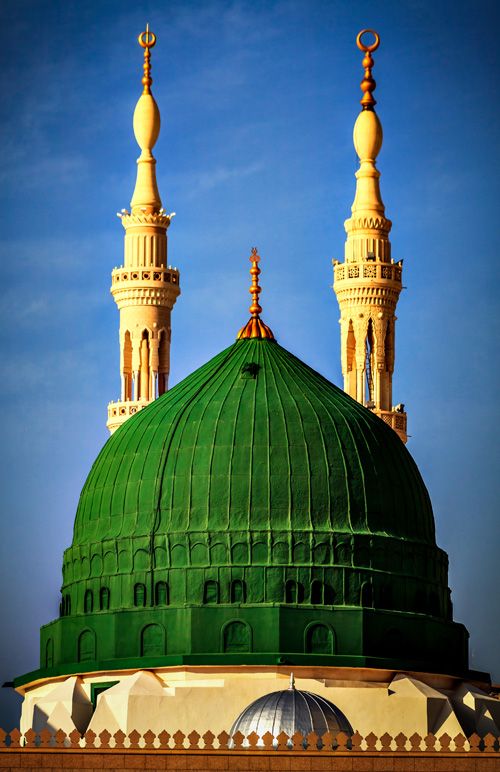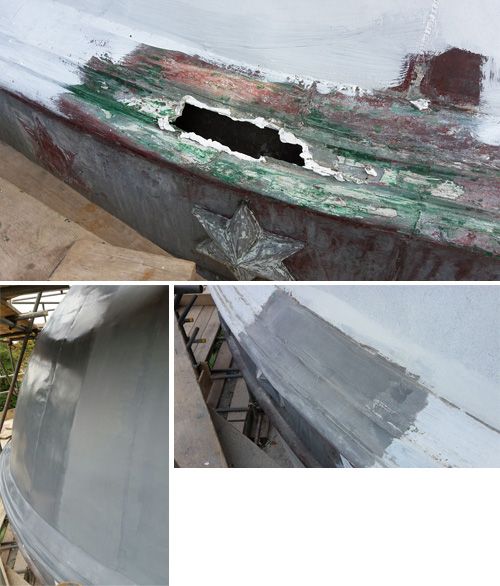


The upkeep of buildings of significance and high regard is often a rewarding and interesting opportunity for Belzona. This was particularly true of the application presented by the Shah Jahan Mosque in Woking, UK. Built in 1889, this mosque was the first to be established in Western Europe, outside of Muslim Spain and has stood for a staggering 127 years. Possessing such historical and religious associations, this building warranted special efforts to preserve its condition. Therefore, today the mosque has the honour of being listed as a building of special interest under the National Heritage, attaining historical Grade II status. Meanwhile, registering as an independent charity means that, since 1995, the local community has continually invested in renovation and restoration of the mosque’s original elegance.
The problem
Most definitely, the jewel in the crown of this prestigious building is its green dome. Included as a homage to the green-coloured dome at the Prophet’s Mosque in Medina, the striking design has become an integral part of Shah Jahan Mosque’s heritage. However, over the course of its lifetime, the zinc dome had become significantly damaged and was showing signs of ageing. It was suffering from a large number of perforations around its circumference due to weathering and corrosion of the metal. In addition, the design comprised of a lateral band formed by 41 zinc stars, which had similarly succumbed to corrosion and loss of shape. All of this damage had led to rainwater leaking into the mosque, causing unwanted disruption to the prayer times and community events taking place.
In search of a solution, the mosque made several enquiries with companies who utilised traditional hot work repair methods, all of whom rejected the application in fear of aggravating the problems even further. Due to the thin and through-wall defects in the already fragile zinc dome, it was believed to be impossible to weld repairs without causing additional damage. As a result, a cold-applied alternative was recommended to both rebuild the existing metalwork, as well as provide a waterproof coating for future protection.
The application
The dome, measuring a total of 6.5m in diameter, was examined thoroughly to identify and repair any thin and through-wall defects. Starting with the most severely damaged areas, Belzona Technosol began to rebuild and resurface the dome’s profile was carried out using Belzona 1121 (Super XL-Metal). Incorporated with a fine steel mesh over the large perforations in the zinc structure, the metal repair composite was cold-applied without the need for specialist tools.
Following some additional sanding, Belzona had restored a firm surface onto which the waterproof membrane could be laid. Once more, the substrate was cleaned and prepared in line with Belzona protocol, before the conditioner was applied across the entire dome and the seamless system of Belzona 3111 (Flexible Membrane) was installed. On such a complex surface, the liquid-applied, waterproof and weatherproof membrane demonstrated its ability to easily conform to the various contours of the dome, providing the mosque with long-term roof protection. In particular, this added flexibility and helped to reinforce the fragile zinc roof, offering respite from the 127 years of continuous exposure.
Altogether, two Belzona Technosol applicators took a total of six days to complete the repairs and protection of the mosque roof. In order to fully restore the dome to its original splendour, the Belzona membrane was painted green with a compatible coating system. Left uncoated, the stars and crescent moon were subsequently gilded by the client in line with the dome’s original design. Very content with the repairs, the specialist works manager commented on behalf of the Shah Jahan Mosque, saying: “The works carried out look incredible. Thank you from both myself and our client at the Mosque.”



